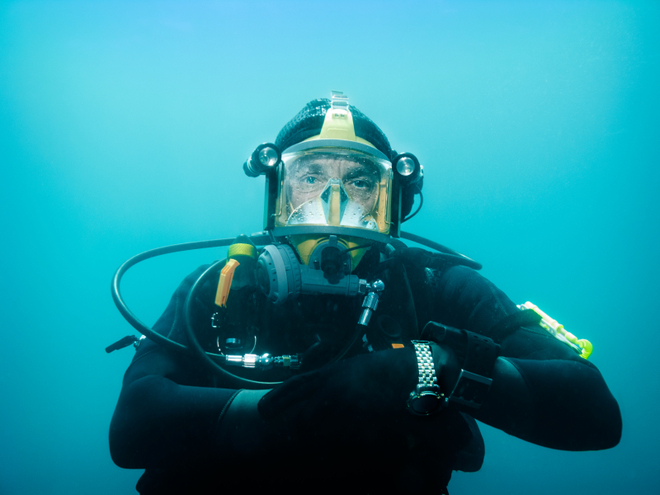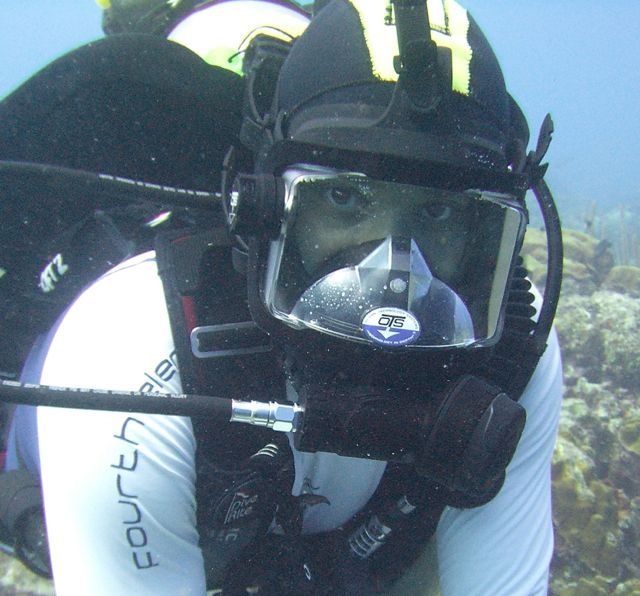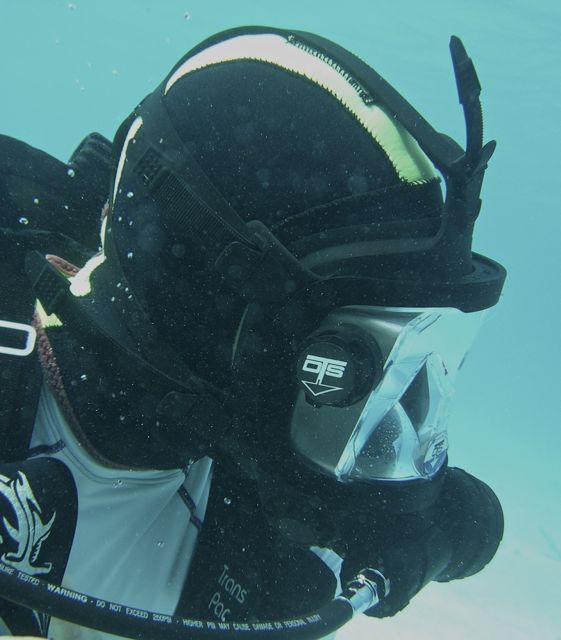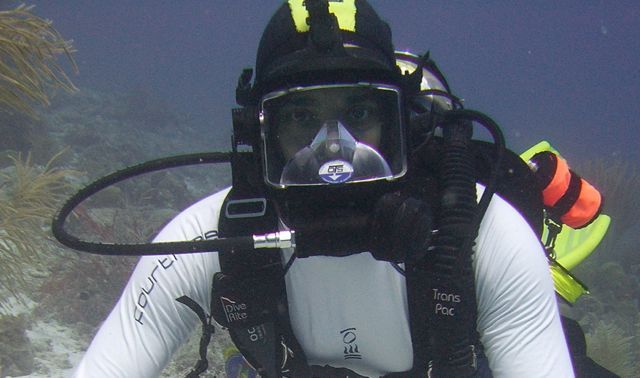The full-face mask first came on the commercial diving scene in the late 1970s and early 1980s, when it was intended to replace the Mark V diving helmet. Although for many years it was associated with technical diving, there’s more and more buzz nowadays about recreational divers enjoying the experience as well.

Before purchasing the mask, make sure that you have mastered your diving skills, as this type of gear requires training that is not needed for a normal mask. Don’t let that put you off though; comfort, safety and efficiency are all huge factors to steer you toward a full-face mask.
- Comfort – You don’t have to worry about fogging with the full-face mask because there is constant positive pressure in the mask. From a full-day excursion to a week of diving on a live-aboard, we all know that jaw fatigue can set in and make for an uncomfortable dive. With the full-face mask there is none of that discomfort, be it for one or two dives or a whole series of them. You will also marvel at the range of vision offered by a full-face mask, which offers a panoramic view of the marine world.
- Efficiency – It is much easier to breathe using a full-face mask because you breathe from your nose instead your mouth, which is natural for most people. Breathing through your nose also means less air consumption.
- Safety – The full-face mask offers the most advantages in this area. It is held in place by five straps, which eliminates risk that the mask will be kicked off by someone’s fins by mistake. If you are diving in extreme cold, your cheeks and forehead are protected. If, for some reason, a diver becomes unconscious, he often spits his regulator out of his mouth. But even in case of an emergency the full-face mask stays on, and air continues to flow within the mask. Similarly, there is less risk of water leaking from the mouthpiece.

The full-face mask also offers the ability for a communications system, which can serve as a way for divers to talk to other submerged divers, or those at the surface.

The full-face mask is a bit more expensive than a regular mask, with prices ranging from $600 to $1600, depending on whether you purchase the mask only or the mask and communication system, as well as other accessories such as adaptors, GoPro camera accessories and more. Masks have blue, yellow and pink trims for those who want more than basic black or want to coordinate with their wetsuit colors.

Two companies, Ocean Technology Systems (OTS) and Ocean Reef Dive Masks dominate the market. Both companies are highly respected in the dive industry and offer much in the way of education so you can get all your questions answered once you own the full-face mask. Once you try a full-face mask, you’ll understand why it’s garnering acclaim in both technical and recreational diving.

